Posted December 8, 2025 by Nicky in Reviews / 0 Comments

Nineteenth-Century Fashion in Detail
Genres: Fashion,
History,
Non-fiction Pages: 144
Series: Fashion in Detail Rating: 
Synopsis: From the delicate embroidery on ballgowns to the vibrant synthetic colors of crinolines, the major themes of 19th-century fashion are explored as never before in this exquisite book. Featuring specially commissioned color photographs of garments from the V&A's superb collection and many close-up details, alongside accurate line drawings of each garment's underlying structure, the book's 150 pieces capture the opulence and variety of this fascinating era.
Nineteenth-Century Fashion in Detail is very much what it says on the tin, discussing the fashions of the nineteenth century through the V&A’s collection, in a series of themed chapters that discuss different trends in fashion.
As usual with this series, the photography is great and there are line sketches of the garments as well to help you envision how they look as a whole — but quite often the whole garment is not pictured, only parts of it, which can be more than a little frustrating (especially to someone who can’t visualise things well).
There are some lovely choices, and I always enjoy when they point out the specifics of the garment in question too (e.g. that you can see traces of unpicking where a gown has been remodelled to suit a new fashion), rather than just discussing generalities.
It’s a nice volume, but again, I just have that little niggle about not showing the full garments!
Rating: 3/5 (“liked it”)
Tags: book reviews, books, fashion, history, Lucy Johnston, non-fiction
Posted December 7, 2025 by Nicky in Reviews / 0 Comments
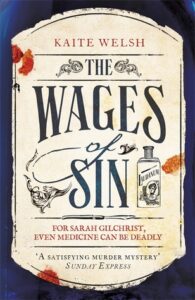
The Wages of Sin
Genres: Crime,
Historical Fiction,
Mystery Pages: 308
Series: Sarah Gilchrist #1 Rating: 
Synopsis: Sarah Gilchrist has fled from London to Edinburgh in disgrace and is determined to become a doctor, despite the misgivings of her family and society. As part of the University of Edinburgh's first intake of female medical students, Sarah comes up against resistance from lecturers, her male contemporaries, and - perhaps worst of all - her fellow women, who will do anything to avoid being associated with a fallen woman...
When one of Sarah's patients turns up in the university dissecting room as a battered corpse, Sarah finds herself drawn into Edinburgh's dangerous underworld of bribery, brothels and body snatchers - and a confrontation with her own past.
Kaite Welsh’s The Wages of Sin is historical fiction, set in Edinburgh with one of the first groups of women to study for a medical degree there. The main character, Sarah, is in disgrace — the only reason she’s been allowed this opportunity anyway, since otherwise she’d be married and in society — and rather an outcast even from her group of outcasts.
That means she has relatively little help/support when she realises that the body on her slab for dissection is actually a girl she met in the process of her volunteering work at a clinic for very poor people, and that she has been murdered. She then proceeds to poke her nose into everything, often very injudiciously, and makes some terrible assumptions and takes a bunch of stupid risks.
This is not to excuse her professor/potential love interest’s behaviour toward her, but she does literally accuse him of murder, so it’s not too surprising that he lashes out in return, threatening her with exposure.
All in all, I found it a pretty rough read, because Sarah was raped, and blamed for her own rape, and it also slowly becomes clear that she was subjected to medical abuse including forced sterilisation. It gives her a strong drive to help other women, and it all makes sense, but it wasn’t pleasant reading and just isn’t really what I’m into when I read mysteries.
Definitely recommended for those who like something grittier and realistic, though.
Rating: 3/5 (“liked it”)
Tags: book reviews, books, crime, historical fiction, Kaite Welsh, mystery
Posted December 7, 2025 by Nicky in Reviews / 2 Comments

Into the Dark
Genres: Horror,
Romance Pages: 227
Series: OutFoxing the Paranormal #3 Rating: 
Synopsis: OutFoxing the Paranormal’s benefactor, Ms. Montague, has a new assignment for the team: to investigate the haunted asylum Oscar’s grandmother died in. But upon arriving at the site, they find a rival duo of ghost hunters already there.
Between unexpected competitors and the murderous ghost of a former nurse, the pressure is on for Oscar to live up to his family’s heritage and lay the asylum’s ghosts to rest. Can he prove himself by putting an end to the nurse’s reign of terror, or will the asylum claim yet another victim?
Oof, Jordan L. Hawk’s Into the Dark genuinely creeped me out in a way the previous two books didn’t really. It was some of the details, I think, and the fact that the haunting partly manifested via illness. Also, “insane asylums” are genuinely terrifying places, and I can well imagine the horror of them even still, even without a haunting.
I’d have loved to see a bit more of Oscar’s grandmother — we get a glimpse of her in the prologue, but her ghost doesn’t appear. Still, we learn a bit more about Patricia’s deal, see a bit more of Chris’ life in the form of their ex, and even maybe a bit of a romance for Tina. I wonder if the group will see more of Zeek, which could be very fun, though I did feel like Oscar’s worries about his presentation of the show etc kind of petered out as a plot thread, and could rear up again if we do. I wasn’t really a fan of his self-doubt. Too real, ahaha.
I did think a bit ahead of the characters in a few details (e.g. if something stops happening if you get away from the creepy haunted asylum, maybe it has something to do with the haunting?) but the twist was still handled nicely, even if I saw it coming.
I read it almost in one go, ’cause there was no putting it down and going to bed until I knew everything worked out okay, yeeesh. I do wonder if Oscar and Nigel are going to end up paying a serious price given what they keep throwing themselves into…
Rating: 4/5 (“really liked it”)
Tags: book reviews, books, horror, Jordan L. Hawk, romance
Posted December 6, 2025 by Nicky in Reviews / 0 Comments

Love in the Palm of His Hand
Genres: Manga,
Romance Pages: 256
Series: Love in the Palm of His Hand #1 Rating: 
Synopsis: Fujinaga is a university student who dreams of becoming an actor so he can do what he loves best--conveying emotion and story through physical expression. But after failing multiple auditions, his hopes are dashed and his confidence crushed. When he meets Keito, a fellow student with congenital hearing loss, Fujinaga is suddenly introduced to the world of sign language. Although clumsy at first, Fujinaga quickly picks up signing and surprises Keito with his astonishing talent of expressing emotions through action.
Through sign language and acting, two young men seeking their places in the world discover a connection that transcends the spoken word.
Is it that only in a place beyond all verbal limitations can two people, both yearning to be understood, forge a bond they never expected?
"To think that just what I've always wanted to hear would come from someone I just met."
Rinteku’s Love in the Palm of His Hand is a really cute manga focusing on a friendship (and burgeoning romance) between Keito and Fujinaga, a Deaf student and a hearing student who is also an actor. The art spends a lot of time trying to portray Keito’s various ways of communicating: lipreading, speaking aloud (without being able to hear and thus sometimes mispronouncing things), texting, different types of sign, mime… Some panels include the hands in multiple different positions to make it clear how dynamically Keito is signing. It’s all lovely, and the artist seems to speak sign — I know nothing about them, but they mention at the end that they were trying to draw their own signs and realising they were getting everything flipped.
The relationship between Keito and Fujinaga is also really cute, as Keito’s enthusiasm for Fujinaga’s expressiveness makes him realise that even though his “overacting” is criticised, there are contexts in which it’s useful and helps him communicate — and Fujinaga’s enthusiasm for learning sign makes Keito feel wanted and understood.
I thought the art and panelling was really interesting, though I wasn’t 100% a fan of the art style — something about eyes/expressions, maybe? But that didn’t stop me loving it: the next volume is out in translation in October, and I’ll snag it right away (I’m writing this review in September). I’d love to spend more time with Keito and Fujinaga, and see how their relationship develops.
Rating: 4/5 (“really liked it”)
Tags: book reviews, books, manga, Rinteku, romance
Posted December 5, 2025 by Nicky in Reviews / 0 Comments
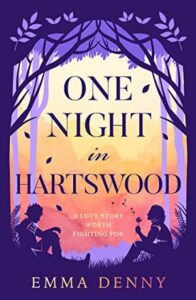
One Night in Hartswood
Genres: Historical Fiction,
Romance Pages: 384
Series: The Barden Series #1 Rating: 
Synopsis: A love story worth fighting for…
Oxfordshire 1360
When Penn and Raff meet in Hartswood Forest the only truth they know of each other is a brief moonlit kiss they had shared previously. But Penn is escaping a life of cruelty, and an arranged marriage to a woman he has never seen. Raff is tracking the elusive missing groom of his sister to restore his family’s honour. Neither are looking for a travelling companion. Yet both men find themselves drawn to each other in ways neither imagined.
Unaware of their true identities they venture north together through Hartswood Forest. And, as their bond deepens, their fates become irrevocably entwined. But, with one escaping a life of duty and one tracking a fugitive, continued concealment threatens everything they know and trust in each other. So when secrets are finally revealed, and the consequences of their relationship become clear, both must decide what they will risk for the man they love.
Emma Denny’s One Night in Hartswood was sadly just… okay. It’s ostensibly historical fiction, but it could equally have been fantasy; that part is really just set-dressing for a mildly forbidden love (in that Raff’s family are absolutely fine with and encourage).
The plot all goes fairly predictably, along with the miscommunication trope in the middle where they’re both hiding their real identity, and then gets infuriating because Raff comes clean and Penn doesn’t — despite knowing that Raff was totally okay with it all. There’s some heaped-on angst with Penn’s scars and Penn’s father’s absolutely bananapants idea to shoot Raff and then pretend he didn’t, but it’s always so obvious it’s going to work out that it lacked urgency (even with the meta-knowing that it’s going to work out of knowing that romance always does).
I didn’t feel like DNFing it, so there’s that for it, but overall it’s just… kinda meh, sadly. I won’t read more in the series.
Rating: 2/5 (“it was okay”)
Tags: book reviews, books, Emma Denny, historical fiction, romance
Posted December 5, 2025 by Nicky in Reviews / 0 Comments
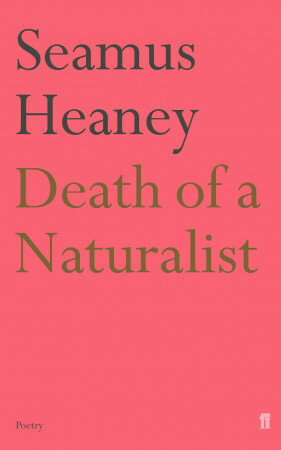
Death of a Naturalist
Genres: Poetry Pages: 56
Rating: 
Synopsis: Death of a Naturalist by Seamus Heaney is the stunning and revelatory first collection by the Nobel Prize-winning Irish poet.
Seamus Heaney’s Death of a Naturalist collection contains some of the poems I know best, including my favourite, ‘Mid-Term Break’, the final line of which is always a perfect punch in the gut:
“A four foot box, a foot for every year.”
There’s something that’s very distinctive about Heaney’s voice as a poet for me, something very solid and direct. It’s not that he doesn’t use imagery, or metaphors, or poetic diction — of course he does at times — but it still feels fundamentally straightforward. Which is part of the art of it, of course.
Definitely one of my favourite volumes of poetry I’ve read lately, if not ever.
Rating: 4/5 (“really liked it”)
Tags: book reviews, books, poetry, Seamus Heaney
Posted December 3, 2025 by Nicky in Reviews / 2 Comments
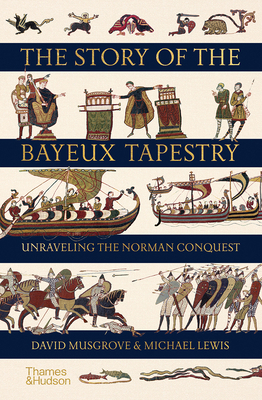
The Story of the Bayeux Tapestry
Genres: History,
Non-fiction Pages: 352
Rating: 
Synopsis: Most people know that the Bayeux Tapestry depicts the moment when the last Anglo-Saxon king of England, Harold Godwinson, was defeated at the Battle of Hastings in 1066 by his Norman adversary William the Conqueror. However, there is much more to this historic treasure than merely illustrating the outcome of this famous battle. Full of intrigue and violence, the tapestry depicts everything from eleventh-century political and social life--including the political machinations on both sides of the English Channel in the years leading up to the Norman Conquest--to the clash of swords and stamp of hooves on the battle field.
Drawing on the latest historical and scientific research, authors David Musgrove and Michael Lewis have written the definitive book on the Bayeux Tapestry, taking readers through its narrative, detailing the life of the tapestry in the centuries that followed its creation, explaining how it got its name, and even offering a new possibility that neither Harold nor William were the true intended king of England. The Story of the Bayeux Tapestry explores the complete tale behind this medieval treasure that continues to amaze nearly one thousand years after its creation.
Michael Lewis and David Musgrove’s The Story of the Bayeux Tapestry is pretty fascinating. The Bayeux Tapestry (yes, I know, it’s actually an embroidery) is something that crops up all over the place, with disconnected pieces getting used for evidence or focused on, but somehow I hadn’t really read anything digging into it fully. I was delighted by this deep dive, which considers loads of different questions about the artwork: who made it? Where? For whom? Why?
They do pick favoured theories eventually, but they’re careful to discuss a number of different ideas, with the support for each, making it clear why they’ve plumped for e.g. the work actually being done in Canterbury, with Bishop Odo as the patron, etc, etc. There are more questions hovering around the tapestry — the identity of certain figures, the meaning of particular episodes, the meaning of the borders — than I’d realised, and of course, many of the questions in all likelihood can’t be answered with any certainty.
The one complaint would be that it would’ve been good to illustrate it much more heavily with the pieces of the embroidery being discussed; the colour plates don’t exactly zoom in on the details, and anyway it’d be easier if the images accompanied the text. It’d balloon out the page count, of course, but isn’t it worth it when discussing such a highly visual medium?
Still, I enjoyed this a lot.
Rating: 4/5 (“really liked it”)
Tags: book reviews, books, David Musgrove, history, Michael Lewis, non-fiction
Posted December 2, 2025 by Nicky in Reviews / 2 Comments

As If By Magic
Genres: Crime,
Mystery,
Short Stories Pages: 349
Series: British Library Crime Classics Rating: 
Synopsis: Impossible crime stories have delighted readers since the invention of detective fiction as puzzle-lovers sought more cerebral entertainment. Following on from Miraculous Mysteries, CWA Diamond Dagger Award-winning crime writer Martin Edwards brings together a whole new casebook of mystifying locked room mysteries and impossible crimes. Featuring more great stories by John Dickson Carr, Julian Symons and Margery Allingham alongside newly rediscovered writers, this selection of stories will bring you more insight into one of the most celebrated and dazzling sub-genres of detective fiction.
I’m not always one for locked room mysteries, I must admit, but the latest British Library Crime Classics collection, As If By Magic, was actually pretty fun. It’s edited by Martin Edwards and has the usual format of short introductions before each story, though this one is opened and closed by a John Dickson Carr story. That feels only appropriate given his influence on the genre!
There is a repeat story that’s used in another collection (“The Coulman Handicap” is in a different British Library collection, not sure which), but otherwise they were all new to me, and there were some ingenious ones. Also far-fetched, of course, but that’s part of the territory with locked room mysteries. It was especially bad with (spoilers for one story ahead) the one where a pistol was shot into a tree and then the bullet fired itself at a man two hundred years later when he burned wood from that tree — though I did kinda enjoy that that one, of course, wasn’t a crime at all.
Overall, pretty fun, though that final Carter Dickson (John Dickson Carr) story does strike quite the macabre note, sheesh!
Rating: 4/5 (“really liked it”)
Tags: book reviews, books, British Library Crime Classics, crime, Martin Edwards, mystery, short stories
Posted December 2, 2025 by Nicky in Reviews / 0 Comments
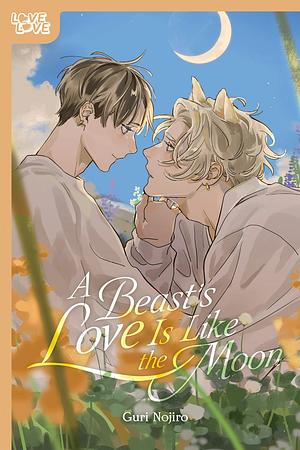
A Beast's Love is Like the Moon
Genres: Fantasy,
Manga,
Romance Pages: 176
Rating: 
Synopsis: Tired of the fast-paced city life, Izuki has agreed to take care of his uncle's house in the mountains, which are said to be "visited by yokai."
Izuki, dismissive of the superstition, goes exploring — only to be attacked by a yokai in the woods. He's saved by a beautiful man named Haku, who claims to be the incarnation of a komainu guardian dog. He pledges himself to Izuki and begs him to be his master. Izuki refuses at first, wanting to return to the city as quickly as possible, but is swayed by Haku's lonely eyes and brings him back to the house. Gradually, he falls into a comfortable rhythm with the pushy but devoted Haku while living under the same roof, and Izuki wonders if he really wants to return to the city as he thought.
However, Haku harbors a secret that could put Izuki's life at risk. Will Izuki and Haku come together in the end, or will Haku succumb to the loneliness that he's held at bay for centuries...?
Guri Nojiro’s A Beast’s Love is Like the Moon features a komainu falling almost instantly in love with a human who stumbles across his shrine while housesitting for a family member. Calling himself Haku, he begs Izuki to be his master, and does his best to bind them together. There’s an early sex scene which comes across as pretty non-consensual, since Izuki’s still very much saying “no” most of the time and it’s not clear he even likes it — though this does seem to be mostly the Japanese m/m thing where one partner is outwardly reluctant the whole time, but does love the other.
As they live together — after all, Izuki’s supposed to be looking after the house, and he can’t let people down now, so he might as well let Haku help — Haku only loves Izuki more, and comes to realise that he can’t force Izuki to stay with him. That leads to the risk of Haku becoming a demon, which of course culminates in some dramatic scenes.
I didn’t like this as much as the other Guri Nojiro manga I read, because the relationship felt even less consensual/mutual, but it does develop into something a little heartwrenching and bittersweet, in the final chapter. Izuki stays with Haku as long as he can, but he is mortal, of course…
Not a favourite, but a fun enough light read.
Rating: 2/5 (“it was okay”)
Tags: book reviews, books, Guri Nojiro, manga, romance, SF/F
Posted December 1, 2025 by Nicky in Reviews / 0 Comments

The Disabled Tyrant's Beloved Pet Fish
Genres: Fantasy,
Light Novels,
Romance Pages: 436
Series: The Disabled Tyrant's Beloved Pet Fish #1 Rating: 
Synopsis: In this novel series originally released in Chinese–and coming to the English language for the first time–a man is transported into the historical world of a webnovel to win over a tyrant… as his pet fish!
When Li Yu falls asleep reading a webnovel about a ruthless, mute tyrant falling in love with a dainty male concubine, he doesn’t expect to wake up inside the world of the novel—especially not as a fish!
Li Yu soon finds himself adopted as Prince Jing's pet carp, tasked by a less-than-helpful Magic System with preventing the prince from becoming a cruel tyrant. If he can accomplish this mission, Li Yu will regain his human form. Yet how can he succeed from inside a fish bowl?!
The first volume of Xue Shan Fei Hu’s The Disabled Tyrant’s Beloved Pet Fish is funny and cute. There are a few cringe moments (the “pearl”, I’ll say no more, ugh), and some very silly moments — but what else would you expect from a book with this premise?
Li Yu is precious, particularly with his growing commitment to and enjoyment of being a fish. I hope he never loses his ability to be a fish sometimes, even as he earns more human time, because he is so proud of earning his golden scales and being a handsome fish. I love him ending up slapping people with his fish tail to get things done, and other such ways of affecting the story.
I love Prince Jing too; he’s spoiled and not always very aware of other people, but he genuinely tries to make his fish happy, and to protect the people he cares about (few though those may be). Wang-gonggong’s devotion to him is great too; it’s clear he’s a person worth caring about, even if he can be arrogant and cold.
I know some of where this story is going, and I look forward to more palace intrigue, more ridiculous fish shenanigans, more of the fish-scamming system, and more romance.
As far as the art goes, it felt like there wasn’t that much of it, but flipping back there are a few pieces… they don’t stick in my mind very much, except for a couple with funny expressions and such. Mostly I think the style just doesn’t totally appeal.
Rating: 4/5 (“really liked it”)
Tags: book reviews, books, danmei, light novels, romance, SF/F













